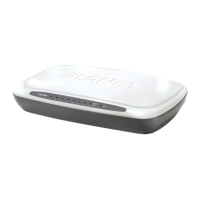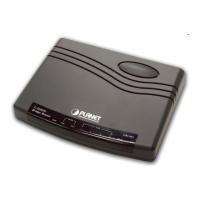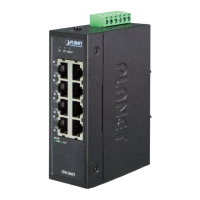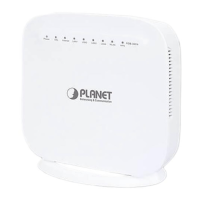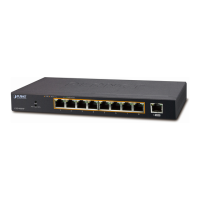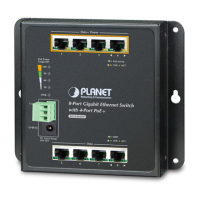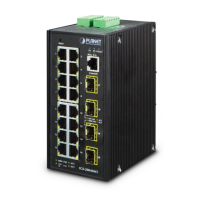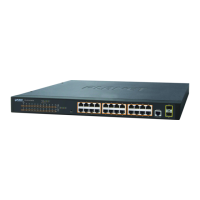- 72 -
Table 5-3 Descriptions of the SGSW-2620 Switch Settings Advanced Web Page screen Objects
@Notice: Make sure of “Max bridge transit delay bound control” is enabled before enable Delay
Bound, because Enable Delay Bound must be work under “Max bridge transit delay bound control is
enabled” situation.
Please click” Help” button; the following screen in Figure 5-12 appears.
Description
Enable MAC address
Aging Out
Allow enable the MAC address age out function. When it is disabling, the following
configure item will not function.
Age-out Time
Allow fill in the number of seconds that an inactive MAC address remains in the
switch's address table. The valid range is 300 to 765 seconds and default value is
300 seconds.
Max Bridge Transmit
Delay Bound Control *
Allow to assign the packets queuing time in switch. After enable this function, the
packets queued exceed will be drop. This valid value are 1sec, 2 sec, 4 sec and off.
Default mode is off.
Enable Low Queue
Delay Bound
Allow to assign the low priority packets queuing time in switch. If the low priority
packet
stays in switch exceed Max Delay Time, it will be sent. The valid range is 1~255 ms.
Broadcast Storm Fil-
ter Mode
Allow setup the broadcast storm control mode. E
nable it and set the upper threshold
for individual ports.
The threshold is the percentage of the port's total bandwidth used
by broadcast traffic. When broadcast traffic for a port rises above the threshold you
set, broadcast storm control becomes active.
The valid threshold value are 5%, 10%,
15%, 20%, 25% and off. Default is 5%.
First Come First Ser-
vice:
The sequence of packets sent is depend on arrive order.
All High before Low
The high priority packets sent before low priority packets.
Weighted Round Ratio
Select the preference given to packets in the switch's high-priority queue. These
options represent the number of high priority packets sent before one low priority
packet is sent. For example, 5 High: 1 Low means that the switch sends 5 high pri-
ority packets before sending 1 low priority packet.
Qos Policy: High Pri-
ority Levels
0~7 priority level can map to high or low queue.

